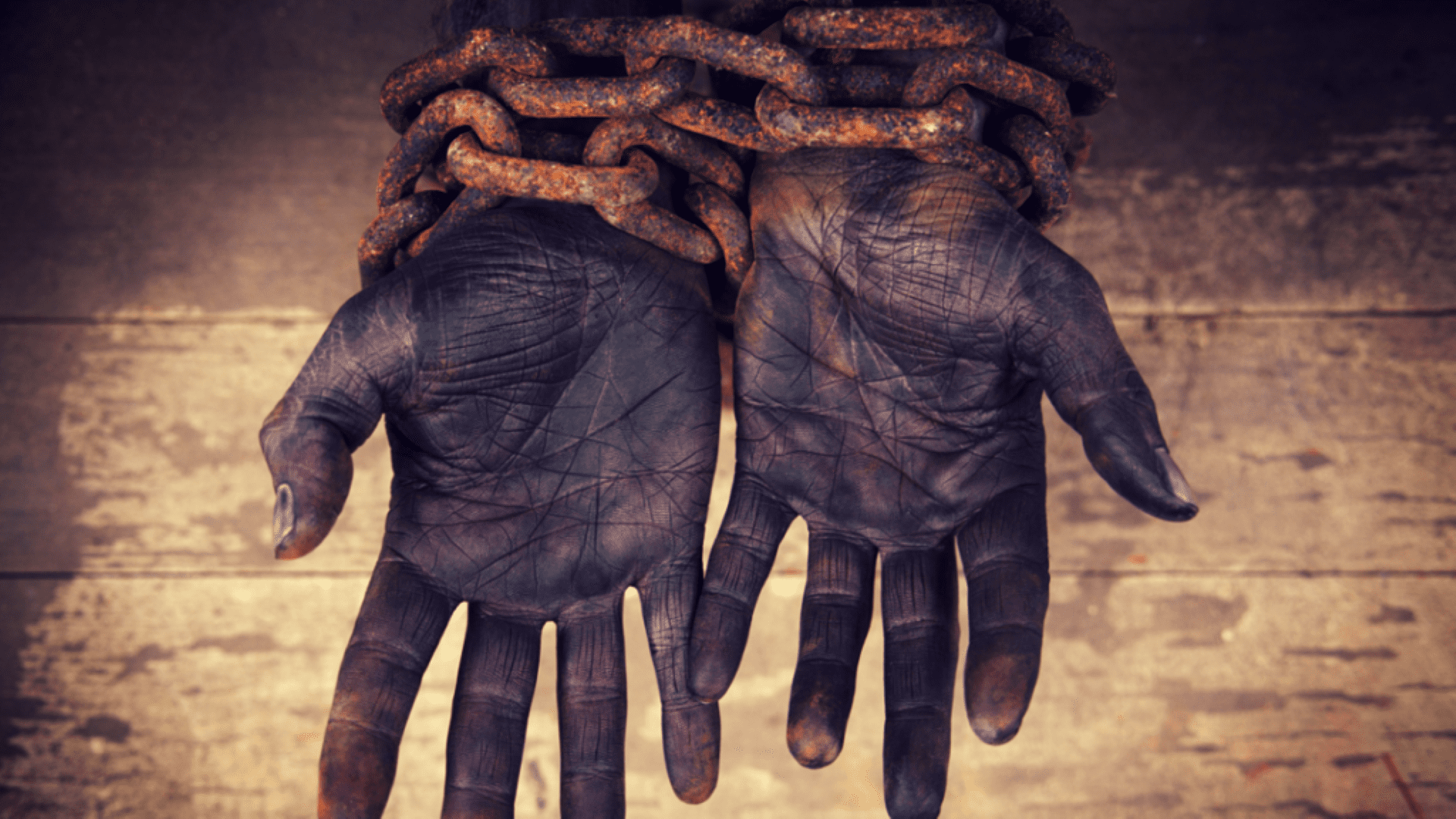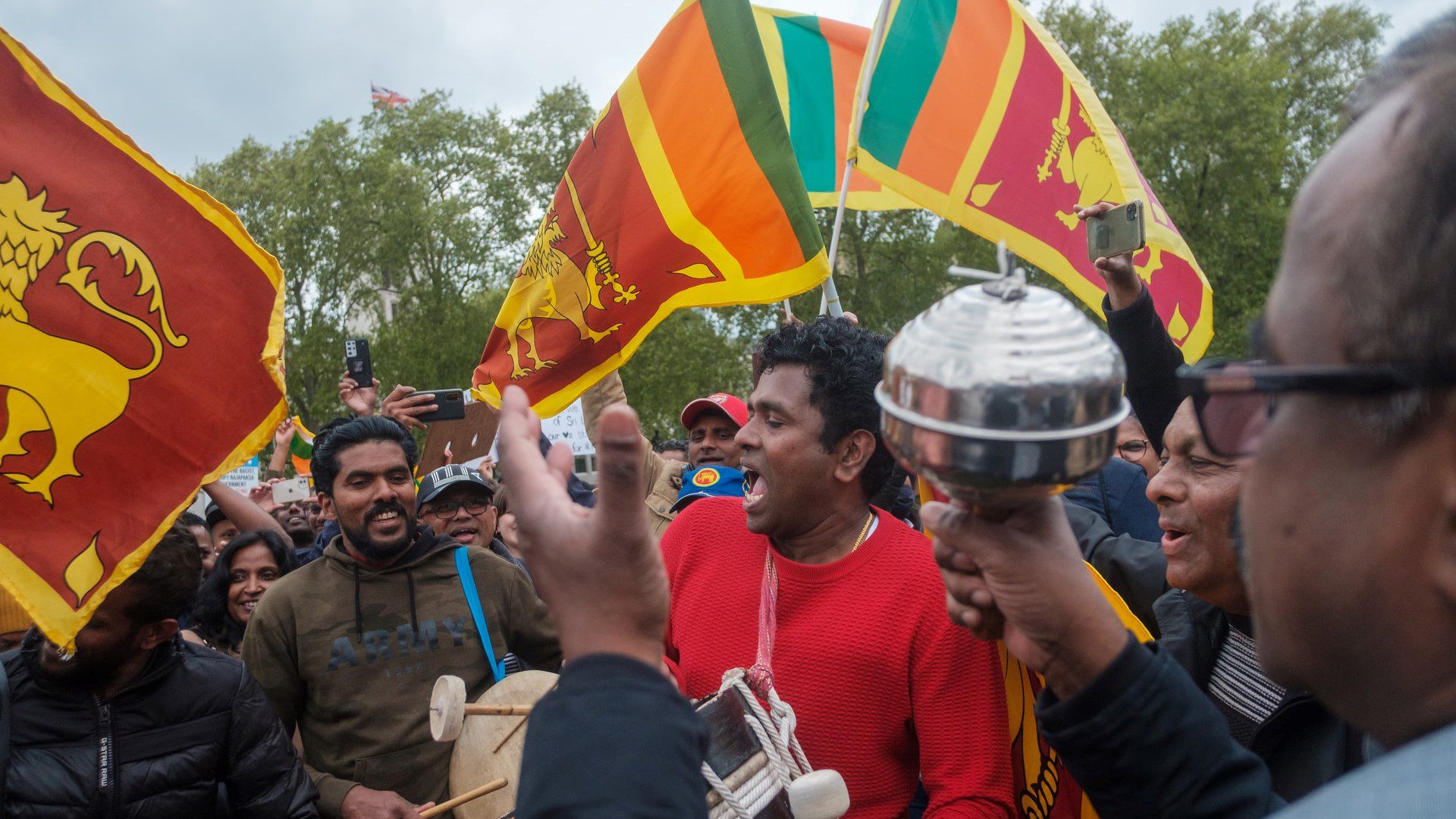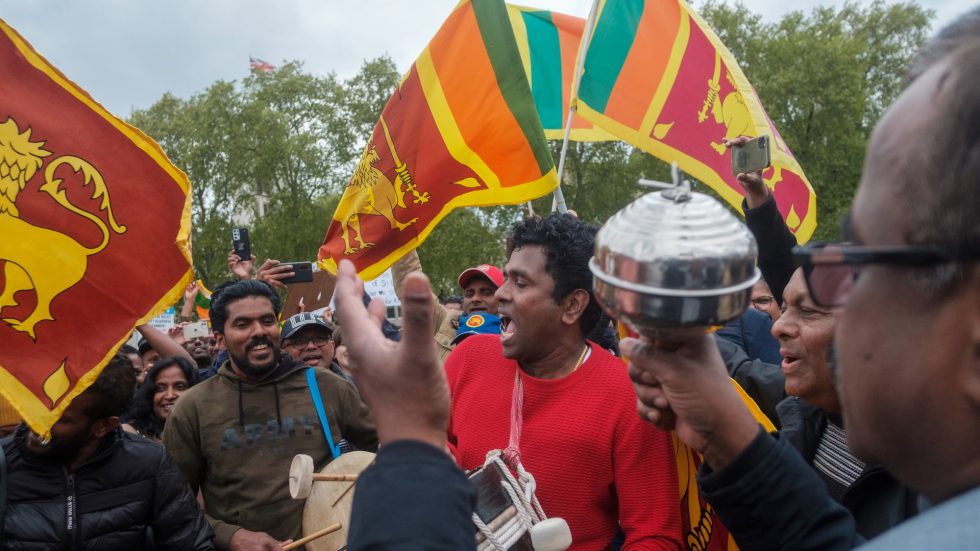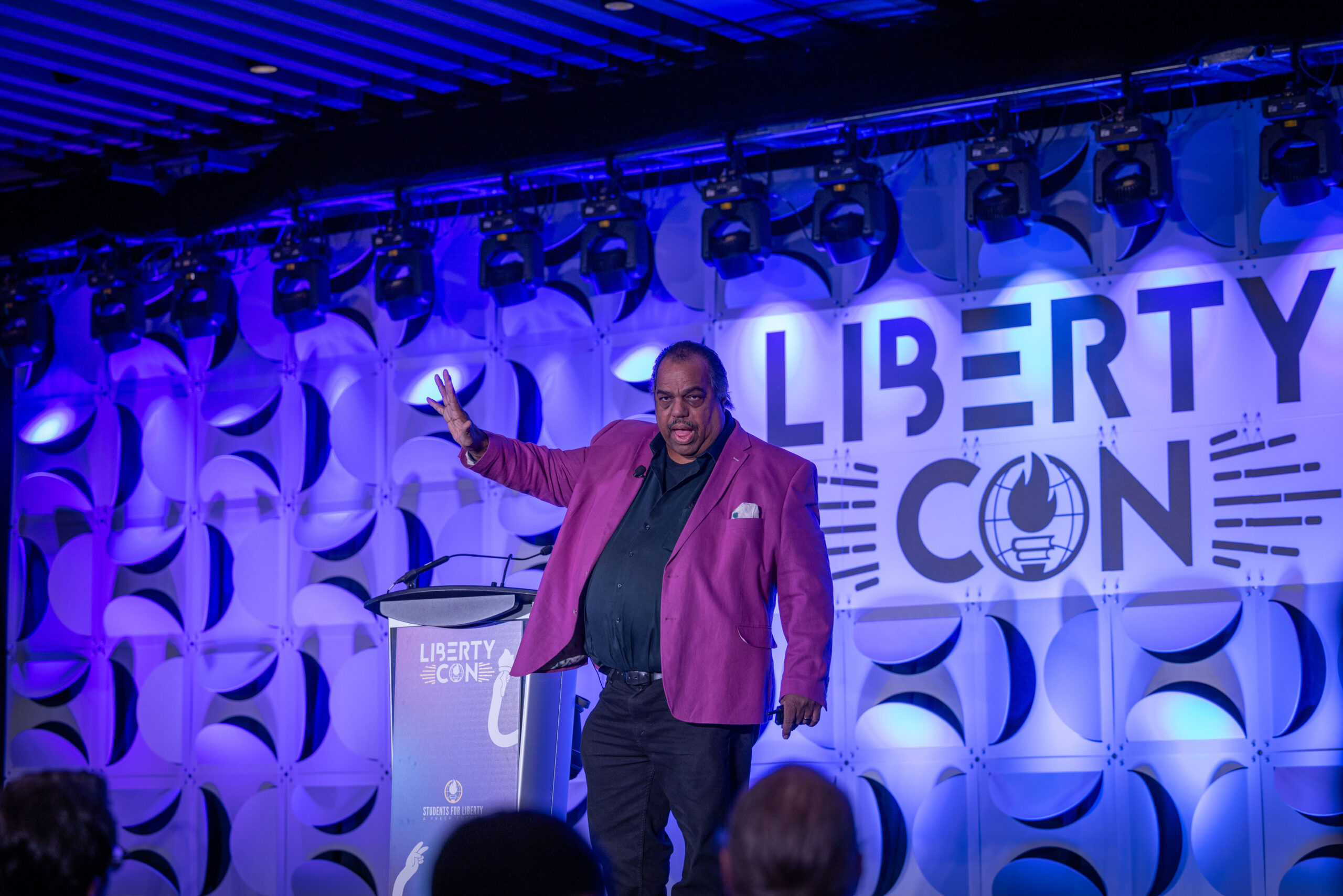For years, I’ve read essays in which students seem to think that on the eve of the American Civil War all people were either abolitionists or slaveholders. But abolitionists and slaveholders were actually at the far ends of the bell curve of the United States’ population.
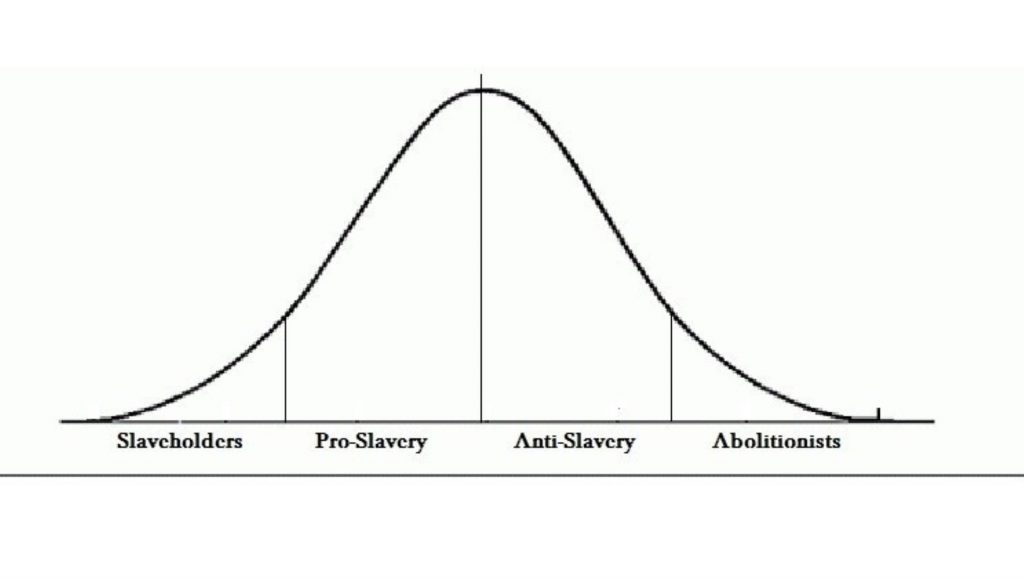
Most Americans occupied an ambiguous middle, between pro-slavery and anti-slavery views, but not necessarily owning slaves or calling for outright abolition. In fact, during the 1850s, the real debate was about curtailing the expansion of slavery, not ending it in the near term.
Abolitionism is one of the complex historical topics that is always over-simplified in textbook accounts of history. The conventional story is that William Garrison was the avant-garde of an abolitionist movement radiating out of New England in the 1830s. By the 1860s, much of the northern population had come over to his side. From this view, the liberal victory over slavery came from the relentless social pressure of the abolitionists.
In reality, though, there were a variety of anti-slavery positions in antebellum America. Let’s focus on just four of them. We know that William Garrison argued for immediate abolition, and justified it on moral and social grounds. But the North Carolinian Hinton Helper opposed slavery for its supposed economic inefficiencies and called for gradual abolition, partly through initiatives that would settle emancipated slaves abroad. Abraham Lincoln’s political opponent, Stephen A. Douglas, took the most moderate view on slavery with his belief that if each state could determine its own laws on slavery, the institution would slowly die out.
Finally, we can add the libertarian Lysander Spooner, who argued that slavery was antagonistic to natural rights and the Constitution. Spooner called for vigilantes to punish slaveholders. There were a variety of anti-slavery positions in antebellum America.
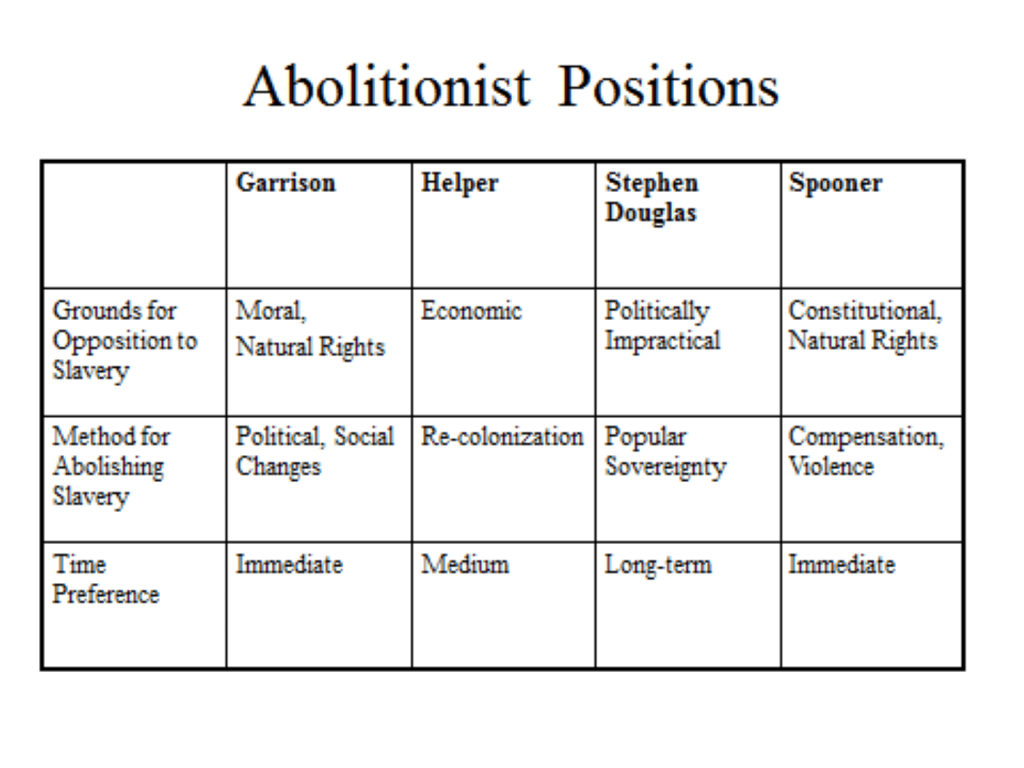
This matrix helps us to explore and argue a variety of anti-slavery positions. In classroom debates on this topic, a surprising number of students gravitate towards non-Garrisonian positions. They might find the economic arguments against slavery more convincing, or a radical approach more compelling.
Through this process, and in their own struggles to choose a position in the matrix, students learn something about the difficult decisions that faced the anti-slavery contingent alone.
They also learn about the value of liberal debate. Conventional wisdom is that the force of the radical abolitionists won America over and ended slavery. But in my view, the decades of debate about slavery were necessary to push society towards accepting slavery’s demise.
The most famous example of moderate and somewhat more radical positions engaging in civil debate is the Lincoln-Douglas debates of 1858. But a very active source of debate was on the east coast, where immediatists, gradualists, and colonizationists argued over the proper form of abolitionism.
Although many Americans became stronger defenders of slavery when faced with calls for its abolition, in the long run, the anti-slavery movement grew because we had a liberal enough society to allow for debate. Gradual, moderate anti-slavery views were a stepping-stone towards abolition.
Liberty develops in fits and starts, and there is no guarantee that it will succeed. When studying history closely, we learn that seldom is there one force or idea that is wholly good or wholly bad. But by recognizing the varieties of antebellum anti-slavery ideas, we see that the general thrust of the period was towards increasing freedom.
To read more about human rights, be sure to check out our cluster page by clicking on the button below.
This article was originally published on the Learn Liberty blog.
This piece solely expresses the opinion of the author and not necessarily the organization as a whole. Students For Liberty is committed to facilitating a broad dialogue for liberty, representing a variety of opinions.
